Dental Implants – San Antonio, TX
A Complete Tooth Replacement Solution

Tooth replacement options have become more and more realistic over the last several decades. Today, we can offer dental implants as a state-of-the-art answer for tooth loss. Out of all the available treatments for missing teeth, dental implants come the closest to looking and feeling like the real thing, largely due to the fact that they are the only option to replace the roots of the teeth along with the crowns. Call today to set up a consultation with Dr. Pham and see if dental implants in our San Antonio, TX dental office could give you a lifelong smile.
Why Choose Crownridge Dental for Dental Implants?
- Dental Implants Placed In-House
- Computer-Guided Surgery
- State-of-the-Art Facility
What are Dental Implants?
A dental implant is made up of a post, a restoration, and an abutment. The posts are usually made of titanium (or another material that can join with your jawbone), and they are surgically placed in the jawbone so that they can mimic the missing teeth roots. The restoration is the dental prosthetic that’s held in place with the implant, and the abutment is what keeps the two other parts connected. Once all the components are in place, you’ll have a lifelike, dazzling tooth to help you enjoy all your favorite foods and speak with confidence in public.
The 4-Step Dental Implant Process

Honestly, dental implants involve a lengthier treatment than dentures or bridges. Getting them even requires a multi-step process that takes a few months. Still, implants are quite worth this time and effort – our office places them in-house to ensure excellent results. In fact, Dr. Pham has advanced training and years of experience with the procedure. That means you can expect four main steps from our implant treatment: consultation, surgery, osseointegration, and delivery of the final restoration.
Initial Dental Implant Consultation
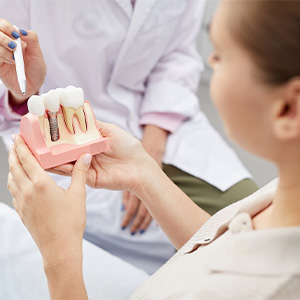
The first step of the implant process is a consultation with Dr. Pham. Through this appointment, you’ll inform us of your treatment goals, health history, and general background. Knowing these factors lets our team confirm whether implants suit you.
Of course, our office can still help if you don’t (immediately) qualify for implants. We’ll work with you to complete preliminary procedures as needed, including gum disease therapy or tooth extraction. Following these services, your mouth will be strong enough to support dental implants.
In case our office approves treatment, the consultation would also cover the details of implant work. That means we’d walk you through the treatment timeline, cost, and similar matters.
Dental Implant Surgery
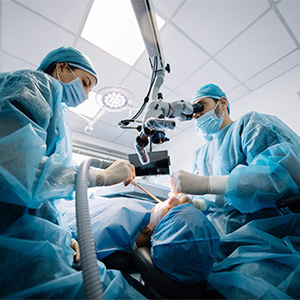
As stated earlier, our practice places implants in-house; we won’t refer you to outside specialists. Thanks to this setup, your treatment will have a shorter duration and involve less travel. Our in-office approach also gives us instant access to your dental records (assuming you’re a returning patient).
When you see us for the implant surgery, you’ll undergo four things:
- An Anesthetic Injection – Before starting treatment, Dr. Pham will numb your mouth with a local anesthetic. This method ensures you won’t feel discomfort from the surgery. At most, you’ll only feel a slight pressure as our staff operates.
- A Minor Incision – Once the treatment site is fully numb, we’ll make a small incision in your gums. Doing so creates a space for your future implant(s).
- Implant Placement – Following the incision, our team will place your implant by using advanced methods and tools.
- Gum Closure – Right after placement, we’ll close the incision in your mouth. We’ll then put a cap over the implant post.
Dental Implant Osseointegration & Abutment
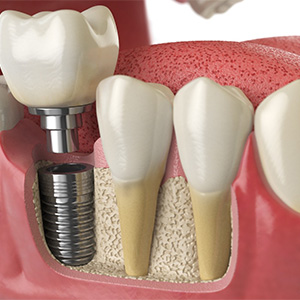
After the surgery is over, your implant(s) will slowly fuse with your jaw’s bone tissue. This fusion process – also called osseointegration – requires 4-6 months to finish. From there, your implant post will be permanent and stay in place without fail.
Once the osseointegration is done, you’ll receive another surgery that places an abutment on your implant post. (An abutment is a metal connector that secures your treatment’s final restoration.) The final restoration will then be crafted from prior dental impressions.
Delivery of Dental Implant Restoration(s)

You’ll receive your final restoration for the last step of the implant process. Based on how many teeth you’ve lost, this item might be a crown, bridge, or denture.
A dentist usually doesn’t need a while to fit the final restoration. Ordinarily, this last bit only needs some cement work. Afterward, you can enjoy your new smile in earnest.
DIOnavi Dental Implant System
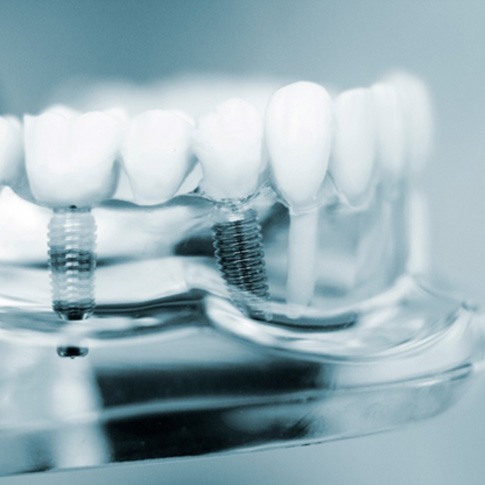
The DIOnavi dental implant system allows Dr. Pham to use advanced technology to completely plan your dental implant placement surgery digitally so he can find the perfect location and depth for your new tooth. He can then position the implants within the jawbone using a conservative, minimally invasive technique that is more comfortable than the traditional method, reducing trauma to the nearby tissues. This means less post-treatment discomfort and a faster recovery, allowing patients to get their new teeth in less time than ever.
Learn More About DIOnavi ImplantsDental Implant Failure & Salvage
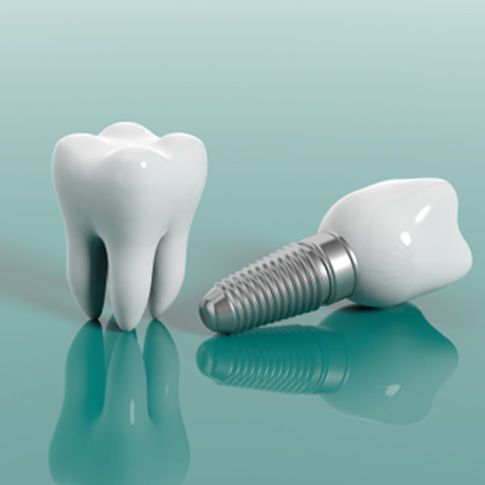
After restoring your new smile with dental implants, the very last thing you should want is to experience an unforeseen complication. Although dental implants have a high success rate, in rare cases, sometimes things can go wrong – but that doesn’t have to spell bad news for your smile! Dr. Pham and our team have a solution: dental implant salvage.
Learn More About Dental Implant Failure & SalvageBenefits of Dental Implants

In reality, dental implants are actually quite popular. American dentists will place as many as 500,000 of them annually! The reason for this high acclaim is the implants’ unique placement method. These restorations fit directly in the jaw, offering perks that dentures and bridges can’t match. Consequently, they have the power to improve your quality of life greatly. For more about the benefits of dental implants, just keep reading or call our office for details.
Day-to-Day Benefits
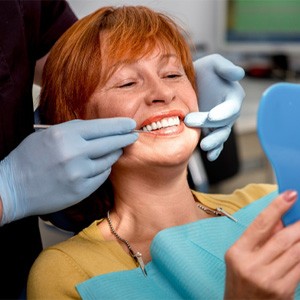
Right after treatment, you’ll immediately notice implants’ day-to-day benefits. These typically include:
- A Lifelike Smile – Implants are capped with dental crowns, so they look pretty and blend seamlessly with your smile. It’s to the point that friends and family won’t notice they’re artificial.
- Boosted Confidence – Once they’ve filled your smile gaps, implants will boost your confidence. From there, you’ll feel less anxious and more self-assured in social settings.
- Easier Eating – Because they restore your bite force, implants let you chew tougher foods. That means they’ll help you enjoy many of your favorite meals!
- Low-Maintenance Care – Compared to dentures or bridges, implants don’t need special care. You can clean them just as you would natural teeth. In other words, remember to brush them twice daily, floss between them once daily, and rinse them often with mouthwash.
Health Benefits

Aside from the everyday upsides, implants also have health advantages. Some of the most notable ones are:
- Stronger Jawbone – Untreated tooth loss will cause your jawbone to erode. Thankfully, implants can prevent and even reverse this erosion. They’d stimulate your jaw and thus preserve its bone tissue.
- Better Nutrition – Since they strengthen your jaw (see above), implants let you eat a broader range of foods. A greater variety in your meals, in turn, will improve your nutritional health.
- Smile Support – Smile gaps from tooth loss can tilt your remaining teeth. Left unchecked, this tilting can lead to more missing chompers. Fortunately, implants fill these gaps and prevent tilted teeth.
- Fewer Oral Risks – Left unchecked, empty jaw sockets are breeding grounds for harmful bacteria. As such, filling them with implants reduces your risk of gum disease and similar issues.
Long-term Benefits

Finally, implants’ long-term perks help them stand apart from other choices. These latter kinds span the following:
- A High Success Rate – When done by a qualified dentist, implants almost always succeed in the long term. Even today, their success rate ten years after placement is about 95%!
- Persistent Results – Even the average implant can last about 15-20 years. Meanwhile, a well-maintained one has a lifespan of 30 years or more. Ultimately, then, an implant treatment could potentially help you for a lifetime.
- Cost-Effectiveness – Implants save you more money than dentures or bridges would. Since they’re long-lasting (see above), they won’t force you to pay for many replacement or repair visits. (Conversely, dentures and dental bridges only last 5-7 years and thus need expensive follow-up care.)
Who Dental Implants Can Help

No treatment is right for everyone, which is why determining whether you’re a viable candidate for implants is one of the most important steps we take during your initial consultation. You can most likely get dental implants to replace any number of missing teeth as long as your mouth and body are in good health overall, and you’re willing to undergo a lengthy process that involves surgery. The implant process can be customized depending on how many teeth you’ve lost, as detailed below.
Who Is a Good Candidate for Dental Implants?

Most healthy adults are able to get dental implants without a problem. Here are some of the most important criteria that we take into consideration as we determine candidacy for dental implants:
- General Health: Placing dental implants is a surgical procedure. You must be in good enough health to undergo this treatment.
- Oral Health: Cavities and gum disease need to be eliminated before you get dental implants. If you have an existing oral health issue, you will need to have this addressed by your dentist ahead of time.
- Jawbone Density: It’s important that you have adequate jawbone density to provide a sturdy foundation for your dental implants.
If you don’t immediately make a good candidate for a dental implant, this doesn’t necessarily rule them out for the future. Some patients need to undergo preliminary procedures before they can get dental implants. This includes tooth extractions, bone grafting, gum disease treatment, and more. If any of these apply to you, we can help to get them scheduled. Once your gums and jaw are in optimal shape, we can move on to planning the rest of your dental implant treatment.
Missing One Tooth
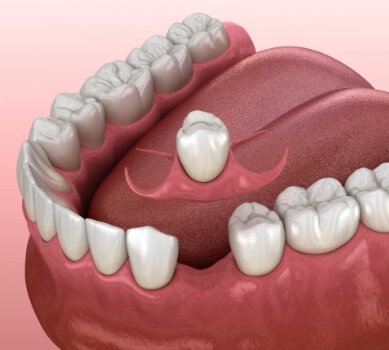
If you’ve lost one tooth, a single implant post will be placed in the gap. A lifelike dental crown will eventually be attached to the post. By using a single implant instead of a traditional dental bridge, you can replace your missing tooth without having to make any changes to your natural teeth.
Missing Multiple Teeth
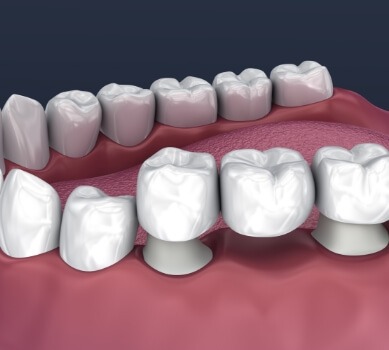
There are a few different ways to replace multiple missing teeth with implants. It depends on how many teeth have been lost and where they were all located relative to each other. Implant bridges, for example, replace multiple teeth in a row; all it takes is two implant posts to hold the bridge in place.
Missing All Teeth
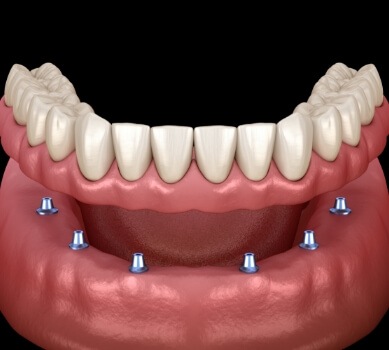
Dental implants are so versatile they can even replace an entire row of teeth. All you need is a denture and four to six implant posts, and you can restore your entire smile at once. Implant dentures can either be removable or fixed based on your preferences, so be sure to ask about what options are available.
Understanding the Cost of Dental Implants
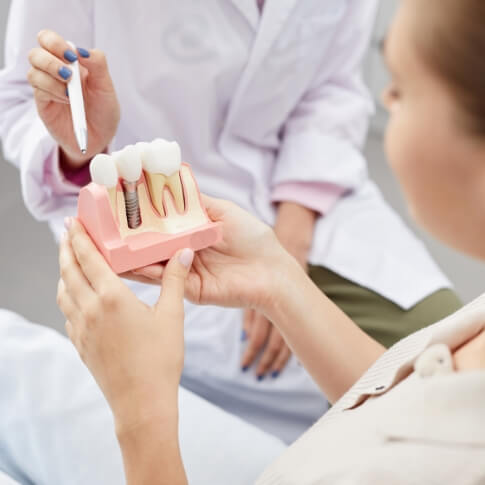
However much you want dental implants, you should learn their price before you commit. You won’t know whether the metal posts fit your budget if you don’t! That said, the cost of dental implants varies by patient; you’ll need to consult Dr. Pham for an exact estimate. Once you have, our team will work to make your care affordable, guiding you through its pricing factors, dental insurance, and more. For other relevant details, please keep reading or call us soon.
Preliminary Treatments & Dental Implant Surgery

Given your case, you may need other services before dental implant surgery. These “extras” can range from gum disease treatment or tooth extractions to actual bone grafts. If you get them, they’ll add to your expenses and ensure your implants’ success. The good news is that dental insurance often partly covers them.
Note that dental implant surgery also has its price. Depending on your implant’s location, your sedation options, and more, placement can cost much or little. Of course, the fact that we place dental implants ourselves should help you save on costs. Our in-house approach means you don’t have to pay an outside oral surgeon.
The Parts of Your Dental Implant
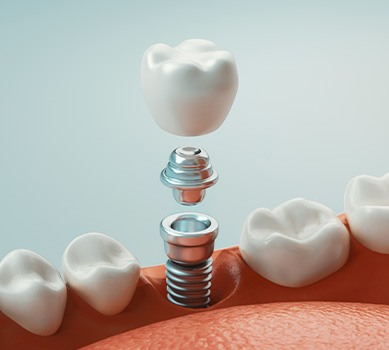
At the same time, your dental implants’ parts and features affect the final cost. Such elements include:
- Number of Implants – As you’d expect, treatment costs more as you get more implant posts.
- Implant Material – Some dental implants use pricier material like zirconia rather than titanium.
- Implant Brand – A dental implant’s brand also impacts its price, as different manufacturers make implants differently.
- Type of Restoration – Ultimately, dental crowns, bridges, and dentures have different costs.
How Dental Implants Pay for Themselves

Dentures and dental bridges have lower upfront prices, but dental implants are still the more cost-effective option. They can save you plenty of money over time.
You see, dental implants (given proper care) can last 30 years or more. They don’t need costly repair or replacement work like other restorations often do. Instead, patients can care for them like natural teeth and save money otherwise spent on dental visits. That would mean your new teeth “pay off” far more than dentures or dental bridges ever would.
Does My Dental Insurance Cover Dental Implants?

Though dental insurance rarely covers dental implants, there are exceptions. Your own plan may offer benefits for a percentage of the restoration, a preliminary service, etc. From there, you’d get a meaningful discount on your treatment.
Really, you should consult your insurance provider before you commit to anything. Our dental team will gladly assist you with that.
Making Dental Implants Affordable

Whether you have dental insurance or not, we can make your dental implants more affordable. Just rely on our office’s helpful payment options! We happen to offer:
- In-House Savings Plans – For a moderate monthly (or annual) fee, you can join one of our in-house savings plans. Each would give you a 20-30% discount on dental implants.
- Flexible Financing – Our practice works with several 3rd party lenders, including CareCredit, Sunbit, and Lending Club. They’d allow you to pay for dental implants in small monthly installments!
While dental implants are the “gold standard” of tooth replacement, they don’t have to exceed your budget. Just visit our office, and we’ll help you finance them!
Dental Implant Post-Op Instructions

Without proper care after dental implant surgery, your restoration can be compromised by a number of issues. At Crownridge Dental, we aim to provide you with all the educational tools you need to ensure you heal quickly and comfortably. From managing side effects to caring for your implants, we’re here to guide you every step of the way! Read more below to find all the general care tips you need, and don’t hesitate to contact us if you have any more specific questions during your recovery.
What to Do Directly After Dental Implant Surgery

Rest and management of your implant sites are the keys to recovery after dental implant surgery. So, plan to take it easy for the first 24–48 hours and avoid strenuous activities. Here are some other ways you can manage discomfort and keep your treatment on track:
- Use an ice pack on your cheek near the surgical area to reduce swelling, alternating 20 minutes on and off.
- Take any prescribed medications as directed.
- Avoid touching the implant site with your fingers or tongue to protect the area.
- Don’t use a straw to drink or create suction in your mouth as it may disrupt the formation of blood clots necessary for healing.
- Practice oral care gently, both brushing and rinsing.
Common Side-Effects When Recovering from Dental Implant Placement

Some mild discomfort is normal after dental implant surgery, so there’s no need to worry. Other common side effects include:
- Swelling around your gums or cheeks.
- Minor bleeding from the surgical site.
- Bruising near the implant area.
- Soreness or tenderness in your jaw.
These symptoms typically improve within a week. However, if you experience excessive pain, swelling, or bleeding, contact our San Antonio office immediately.
Your Diet After Dental Implant Surgery

Stick to soft, nutrient-rich foods and water for the first few days while you’re recovering from your implant surgery. Options like soups, yogurt, scrambled eggs, and smoothies are easy to eat and won’t irritate the surgical area.
Avoid hot, cold, spicy, granular, or crunchy foods for the first few days to reduce the risk of irritation. You should also cut your alcohol consumption as it can slow down the healing process and interact poorly with post-op medications. Once you start to feel better, you can gradually reintroduce other foods back into your routine.
Post-Op Health & Oral Hygiene

Keeping your mouth clean after surgery is critical to prevent infection. Gently rinse with warm salt water starting 24 hours after surgery to soothe the area and reduce bacteria. When you’re finished rinsing, let the liquid fall from your mouth instead of spitting. Continue brushing and flossing but be very careful around the implant site until it’s fully healed.
What to Do After Your New Teeth Are Attached

Once your permanent restorations are attached to the implants, it’s important to continue a consistent oral care routine. Brush and floss daily to keep your implants and surrounding gums healthy. You should also visit our San Antonio dental office at least twice a year for professional cleanings and checkups to keep your new smile in shape.
With proper care, your dental implants will keep your smile strong and beautiful for decades, if not a lifetime!
Dental Implant FAQs
What Can Cause Dental Implants to Fail?
With a success rate of over 95%, dental implant failure is quite rare. That said, it can happen, and one of the best ways to prevent it from happening to you is by taking great care of your smile – from brushing and flossing consistently to coming to our office every six months for a dental checkup and cleaning. It’s equally as important that you avoid doing anything that can compromise your dental implant, like smoking, chewing on ice cubes, or using your teeth as tools to open things, so make sure to break any existing bad habits too!
What Should I Do if My Implant Feels Loose?
Since this is often due to dental implant failure, we don’t recommend taking the “wait and see” approach. Instead, contact us when you first notice that something is wrong. Once we learn more about your symptoms, including how severe they are, we can schedule an emergency exam and walk you through what to do in the meantime, like eating extremely soft foods and not chewing on that side of your mouth.
Am I Too Old to Get Dental Implants?
You might be surprised to hear this, but there actually isn’t an upper age limit for dental implants. Candidacy is instead determined by factors like the state of the patient’s oral health, the density of their jawbone, and their willingness to quit bad habits, like smoking. So, you shouldn’t let your age stop you from scheduling a consultation with us to discuss dental implants!
Will I Have to Take Off Work for Dental Implant Surgery?
Most patients take a day or two after their procedure off so they can focus on recovering. If you work in construction or in another industry that is physically demanding, then we may recommend taking a bit more time off to prevent complications, like blood diverting from the implant site. If you don’t have a lot of PTO (or you are saving it for a vacation), consider scheduling your appointment on a Thursday or Friday so you have the weekend to recover as well.
Is There Anything I Shouldn’t Eat with Dental Implants?
There are some foods that increase the risk of your restoration breaking, yes. So, do your best to avoid (or, at the very least, exercise caution with) foods that have a crunchier or stickier consistency, like peanut brittle, hard pretzels, and caramel-filled candies. Additionally, don’t chew on ice cubes, drink alcohol excessively, or put the back of your pen or pencil in your mouth.
Can Dental Implants Replace Molars?
Yes, dental implants can replace any type of tooth, including molars. So, if you lost one of yours, don’t hesitate to schedule a consultation with us! At your visit, we can review your medical history, learn about your dental needs, and determine if dental implants are the best tooth-replacement solution for you.
I Need a Checkup & Cleaning I Need a Dentist for My Child I am Worried about Gum Disease I Have a Cavity or Broken Tooth I am Missing One or More Teeth I Want to Enhance My Smile I Want a Straighter Smile I Snore or Gasp for Air in My Sleep I Have a Dental Emergency View Our Services
